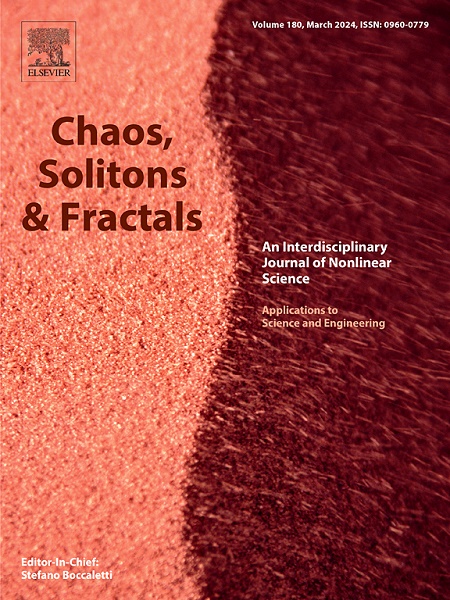Indirect information propagation model with time-delay effect on multiplex networks
IF 5.3
1区 数学
Q1 MATHEMATICS, INTERDISCIPLINARY APPLICATIONS
引用次数: 0
Abstract
Epidemics pose a significant threat to humanity. During the early stages of an outbreak, individuals often lack comprehensive or timely access to disease-related information. The primary mode of information propagation is indirect, primarily originating from friends or their extended networks. The primary mode of information propagation is indirect, primarily originating from friends or their extended networks. Additionally, the spread of information is influenced by the incubation period of infected individuals. In this study, we develop a novel information–disease coupled propagation model, integrating both indirect information transmission and individual disease incubation periods into the dynamics of information–disease interaction on multiplex networks. It is called time-delay ID-CIP. We derive the epidemic outbreak threshold using a microscopic Markov chain approach and compare our model with classical pairwise interaction propagation and recent higher-order models. The findings suggest that the proposed information propagation mechanism is more effective in suppressing disease spread. Numerical simulations reveal that prior to an outbreak, awareness density converges to zero in the steady state, helping prevent epidemic-related rumor propagation. The disease’s incubation period has no effect on the density of the infected population in the steady state; however, it significantly impacts the density of individual’s epidemic-related awareness.
多路网络中具有时滞效应的间接信息传播模型
流行病对人类构成重大威胁。在疫情爆发的早期阶段,个人往往无法全面或及时地获得与疾病有关的信息。信息传播的主要方式是间接的,主要来源于朋友或他们的扩展网络。信息传播的主要方式是间接的,主要来源于朋友或他们的扩展网络。此外,受感染个体的潜伏期也会影响信息的传播。在本研究中,我们建立了一种新的信息-疾病耦合传播模型,将间接信息传播和个体疾病潜伏期整合到多重网络上的信息-疾病交互动力学中。它被称为时滞ID-CIP。我们使用微观马尔可夫链方法推导了流行病爆发阈值,并将我们的模型与经典的两两相互作用传播模型和最近的高阶模型进行了比较。研究结果表明,所提出的信息传播机制在抑制疾病传播方面更为有效。数值模拟表明,在疫情爆发之前,意识密度在稳定状态下趋近于零,有助于防止与疫情有关的谣言传播。在稳定状态下,疾病潜伏期对感染人群密度无影响;但对个体的疫情相关意识密度有显著影响。
本文章由计算机程序翻译,如有差异,请以英文原文为准。
求助全文
约1分钟内获得全文
求助全文
来源期刊

Chaos Solitons & Fractals
物理-数学跨学科应用
CiteScore
13.20
自引率
10.30%
发文量
1087
审稿时长
9 months
期刊介绍:
Chaos, Solitons & Fractals strives to establish itself as a premier journal in the interdisciplinary realm of Nonlinear Science, Non-equilibrium, and Complex Phenomena. It welcomes submissions covering a broad spectrum of topics within this field, including dynamics, non-equilibrium processes in physics, chemistry, and geophysics, complex matter and networks, mathematical models, computational biology, applications to quantum and mesoscopic phenomena, fluctuations and random processes, self-organization, and social phenomena.
 求助内容:
求助内容: 应助结果提醒方式:
应助结果提醒方式:


